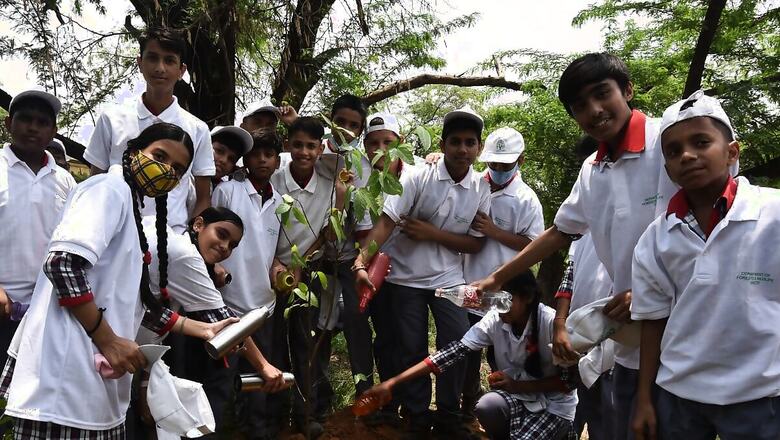
views
Trees play a vital role in maintaining air quality, conserving water, preserving soil, supporting wildlife, reducing drought, preventing soil erosion and pollution, and regulating the climate. Preservation of trees and reforestation is hence an absolute necessity.
News18 Network’s ‘Project One Tree’ is a movement that aims to mobilise every Indian to plant a tree as a measure against climate change. This marquee movement seeks to raise awareness about environmental conservation and foster collective action towards a greener, more sustainable future.
Another movement popular in raising awareness is Van Mahotsav. It serves as a reminder that we need to preserve forests, put an end to deforestation, and follow the 3R rule — Reduce, Reuse and Recycle.
Van Mahotsav
Van Mahotsav or Forest Festival is a week-long annual tree-planting festival celebrated in India, typically from July 1 to July 7. The term “Van Mahotsav” is derived from the Hindi words “Van” meaning forest and “Mahotsav” meaning festival. During this festival, people from all walks of life, including government officials, school children, and citizens, come together to plant trees and saplings in their neighbourhoods, schools, and public spaces. It has contributed to the cause of environmental preservation and increased public awareness on the importance of forests and trees.
History of Van Mahotsav
The festival was initiated in 1950 by Kanaiyalal Maneklal Munshi, the then-Union Minister for Agriculture and Food, to create awareness about the importance of trees and forests in our lives. He started the Van Mahotsav campaign to expand the forest cover and inspire people to plant trees and conserve forests.
Van Mahotsav has its roots in a successful tree plantation drive held in Delhi in July 1947, which was attended by national leaders like Abul Kalam Azad, Jawaharlal Nehru and Dr Rajendra Prasad. Over the years, the program has gained significant momentum, with millions of trees planted across India.
Indian historian, civil servant, and botanist Shri MS Randhawa organised the first Indian national tree plantation week from July 20 to July 27, 1947. The inaugural ceremony took place on July 20, 1947, when Delhi Commissioner Shri Khurshid Ahmad Khan planted Bauhinia saplings. Another ceremony was conducted in Purana Qila in the afternoon under the direction of Jawaharlal Nehru.
Van Mahotsav is observed during the rainy months as the season provides the ideal climate for the plants to grow and thrive.
How Is Van Mahotsav Celebrated
Native trees are usually planted to commemorate Van Mahotsav since they are more suited to the local environment and have a higher chance of surviving. For the purpose of planting trees during this week-long celebration, state governments and civic organisations provide saplings to academic institutions like schools, colleges, universities, NGOs, and welfare organisations.
Along with participating in numerous awareness initiatives, you can celebrate the occasion by planting trees at your residence, workplace, school, and university. Social media users can share the importance of Van Mahotsav through online posts.
Schools often host workshops to teach students the value of planting trees and how doing so would reduce pollution and prevent global warming. Paintings and poster-making competitions, along with pasting graphic banners are also some fun ways to celebrate.
Short film screenings, documentaries, seminars, and exhibitions based on the Van Mahotsav theme can be conducted to further put emphasis on the cause.















Comments
0 comment